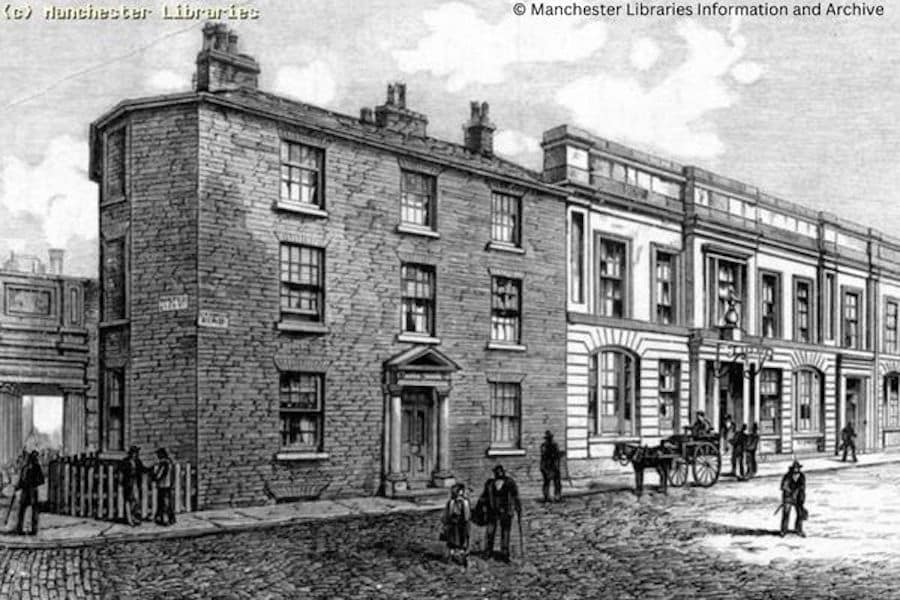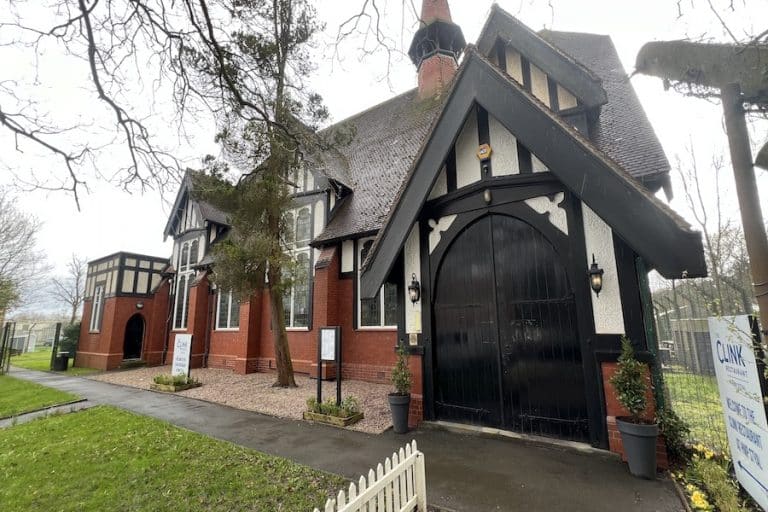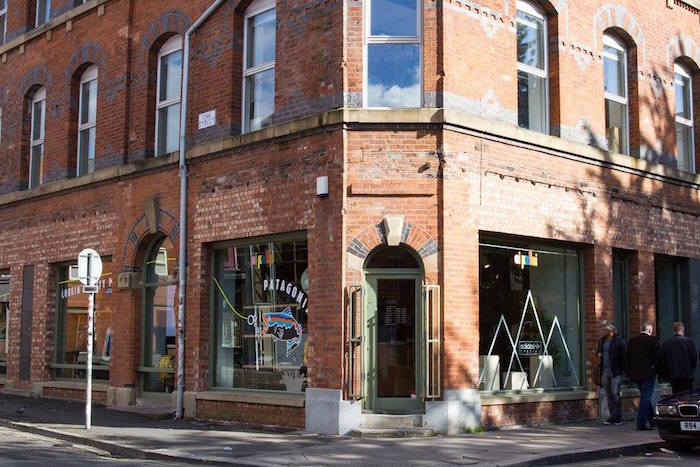The historic birthplace of inter-city railways will become new holiday property
- Written by Thom Bamford
- Last updated 1 year ago
- Community, Featured, History, Travel & Hotels

Nestled at the core of Manchester’s historical legacy, the Station Agent’s House stands as an emblem of not just Mancunian pride but a pivotal chapter in the UK’s rich history.
Positioned at the site of the world’s first passenger railway station, Liverpool Road Station, this iconic residence is undergoing a meticulous transformation into eight splendid holiday retreats, offering a unique opportunity for visitors to immerse themselves in a bygone era.
It pre-dates and is adjoined to the museum’s Grade I listed 1830 Station.
This partnership signifies a key milestone for the Science and Industry Museum’s broader plans to restore its seven-acre industrial heritage site.
The goal is to welcome guests for holidays and open days in 2024.

Built in 1808 for John Rothwell, a partner in a nearby dye-works, the Station Agent’s House pre-dates the Grade I listed 1830 Station at Liverpool Road.
Liverpool Road Station, the Manchester terminus of the world’s first steam-powered inter-city railway, is a historical landmark.
The adjacent house, once accommodation for the Station Agent, later became a shop and office space.
Unsuitable for museum gallery use due to its layout, the Station Agent’s House has served as offices since 1983. Now, with the Landmark Trust’s expertise, this piece of industrial heritage will undergo sensitive repair and restoration, becoming an accessible holiday property for up to eight people.
Station Agent’s House
In the bustling dawn of the Railway Age in 1830, Liverpool Road Station opened its doors, marking the birth of inter-city passenger railways.
At its core stood the iconic Station Agent’s House, the dwelling of Joseph Green, the first Station Agent.
The history of Liverpool Road Station
Immersed in the Industrial Revolution, this handsome property witnessed the evolution of train travel.
Liverpool Road Station stands as the pioneer of railway travel. In 1830, at the dawn of the Railway Age, this station marked the birth of the world’s first purpose-built, inter-city passenger railway terminus.
As the Liverpool & Manchester Railway identified the site’s strategic location in 1828, plans for Liverpool Road Station took shape.
The Station Agent’s House became the epicentre, witnessing the evolution of train travel and housing the first Station Agent, Joseph Green.
Originally a bustling passenger station, Liverpool Road struggled to keep pace with the surging popularity of train travel.
By 1844, it transformed into a goods and freight station, and later, a depot.
Liverpool Road Station was the launchpad for the world’s first steam-powered, inter-urban railway, designed for both passengers and goods.
The railway’s impact reverberated globally, leading to the birth of the railway mania era.
Passenger travel witnessed a surge, with journeys twice as fast and half the cost of stagecoaches. The railway transformed communication, connecting cities and broadening horizons.
The success of Liverpool Road Station became a beacon, inspiring the creation of over 35 railway lines during the ‘Railway Mania’ period in Britain.
As passenger travel outgrew the small station, the site transformed. By 1844, it became a goods and freight station, closing its doors in 1975.
Recognising its significance, the Science and Industry Museum emerged in 1983, with the Station Agent’s House serving as the museum office.
Recognising its historical significance, the site was converted into the Science and Industry Museum in 1983, with the Station Agent’s House becoming museum offices.
A sleepover at the Station Agent’s House
In collaboration with the Science & Industry Museum, the Landmark Trust embarks on a journey to revive The Station Agent’s House.
The project aims to transform this historical gem into environmentally sustainable holiday accommodation for eight guests, offering a unique opportunity to step back in time.
Today, Liverpool Road Station continues to be a living testament to Manchester’s revolutionary spirit.
The ongoing restoration project of The Station Agent’s House, with your support, aims to welcome guests by 2024, providing a rare opportunity to live and breathe the history of the world’s first passenger railway station.
Find out more on the Science and Industry Museum’s website by clicking here
The Station Agents House Redevelopment
Sally MacDonald, Director of the Science and Industry Museum says: ‘We are delighted that the Landmark Trust will be bringing their expertise in sensitively restoring incredible heritage buildings to enable Station Agent’s House to be experienced by the public for the first time.
“At the Science and Industry Museum we explore ideas that change the world from our globally significant industrial heritage site.
“It’s our aim to bring into use every part of the museum’s site possible, and along with the conservation and re-opening of the Power Hall with its much loved historic engines and locomotives, current repair work on the 1830 Station and plans for new galleries and outdoor experiences in the coming years, we are so pleased to be working with the Landmark Trust to lead on crucial work to this building as part of our plans to create a more sustainable museum and reveal new spaces and perspectives for visitors to enjoy.”
Anna Keay, Director of The Landmark Trust says: “The Landmark Trust is delighted to be working with the Science and Industry Museum at historic Liverpool Road, site of the world’s oldest surviving passenger railway station.
“The Station Agent’s House, around which the pioneering station was created, is an outstanding piece of industrial heritage.
“The building will be sensitively repaired and made available to all through self-catering stays and free public open days. As a charity, the Landmark Trust is committed to saving and sustaining outstanding heritage, and is thrilled to be playing a role in Manchester.”
Bev Craig, Leader of Manchester City Council says: “We welcome this exciting partnership and the Landmark Trust to Manchester as part of the Science and Industry Museum’s pioneering improvement plans.
“This scheme will enable people to enjoy an important aspect of our city’s heritage for the first time as part of a thriving and rejuvenated destination.”
Calum McGowan, Chair, Castlefield Forum says: “We are thrilled at these proposals, and what great news to see more of the museum’s estate come to life.
“Part of our mission at the Forum is to ensure that we celebrate and cherish the heritage assets in our neighbourhood so this is another great contribution towards that. The building looks set to be a wonderful place to stay, on an iconic site, in an iconic neighbourhood!”
You can make a donation to the Landmark Trust by clicking here
- This article was last updated 1 year ago.
- It was first published on 9 January 2024 and is subject to be updated from time to time. Please refresh or return to see the latest version.
Did we miss something? Let us know: press@ilovemanchester.com
Want to be the first to receive all the latest news stories, what’s on and events from the heart of Manchester? Sign up here.
Manchester is a successful city, but many people suffer. I Love Manchester helps raise awareness and funds to help improve the lives and prospects of people across Greater Manchester – and we can’t do it without your help. So please support us with what you can so we can continue to spread the love. Thank you in advance!
An email you’ll love. Subscribe to our newsletter to get the latest news stories delivered direct to your inbox.
Got a story worth sharing?
What’s the story? We are all ears when it comes to positive news and inspiring stories. You can send story ideas to press@ilovemanchester.com
While we can’t guarantee to publish everything, we will always consider any enquiry or idea that promotes:
- Independent new openings
- Human interest
- Not-for-profit organisations
- Community Interest Companies (CiCs) and projects
- Charities and charitable initiatives
- Affordability and offers saving people over 20%
For anything else, don’t hesitate to get in touch with us about advertorials (from £350+VAT) and advertising opportunities: advertise@ilovemanchester.com

Head down the rabbit hole for Adventures in Wonderland with Z-arts

Major rail investment set to transform Manchester-Leeds commutes

“His presence will be deeply missed” Children’s hospice bids farewell to their visionary CEO

Has Gordon Ramsay created Manchester’s ultimate bottomless brunch?

The Clink celebrates ten years of empowerment and second chances
















